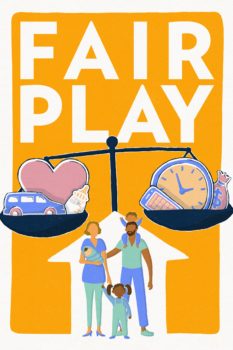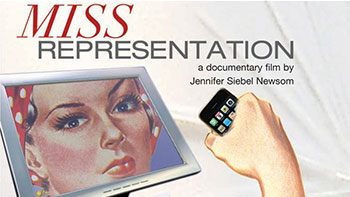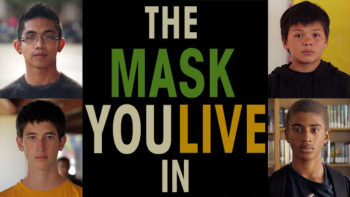Eating Disorders Awareness Week may be behind us, but that doesn’t mean there still isn’t a TON to talk about regarding the relationship between eating disorders and the media. And although Melissa argues that the media isn’t a direct cause of eating disorders, that doesn’t mean that it can’t fuel them. So here’s a quick glimpse into one type of media that does just that: thinspiration.
Connect with Melissa on Twitter (@fyeahmfabello) and Tumblr (fuckyeahmelissafabello).
Visit www.melissafabello.com for more information or to book Melissa as a speaker.
Resources
Anti-Thinspiration & Recovery Blogs:
- Curve Appeal
- We Are Anti-Thinspo
- Say No to Thinspo
- Fit vs. Fiction
- Recovery Is Beautiful
- Life without ED
Body-Positive Articles:
- Beauty Redefined: “Want a Healthier 2013? Ditch the Weight Loss Resolutions!”
- Beauty Redefined: “Holiday Survival Guide: Beauty Redefined Style”
- Everyday Feminism: “5 Ways to Switch from Sabotaging Thoughts to Empowering Ones”
- NEDA: “10 Will Powers for Improving Body Image”
- NEDA: “10 Steps to Positive Body Image”
- NEDA: “20 Ways to Love Your Body”
FULL TRANSCRIPT:
[Melissa A. Fabello; Philadelphia, PA | @fyeahmfabello] Eating Disorders Awareness Week may be behind us, but that doesn’t mean that there still isn’t a ton to talk about regarding the relationship between eating disorders and the media. Last month, I made a video detailing how the media doesn’t cause eating disorders, but that doesn’t mean that it can’t fuel them. And today, I want to talk about one specific kind of media that does just that: thinspiration.
[Everyday Media Literacy. With Melissa A. Fabello; For Miss Representation]
The word – thinspiration – defines itself; it’s a portmanteau, or linguistic blend [Portmanteau: Linguistic blend (Bennifer, Spanglish, sexting)], to describe images created and used to “inspire” consumers to be “thin.” And pro-eating disorder websites use it in order to motivate community members to fast and to propel readers deeper into their disorder. [Slide: Pro-eating disorder websites are communities that hail the illnesses as lifestyle choices, essential to the sufferers’ personal identities, that they believe should be maintained and respected (Udovitch, 2002).] Thinspiration often comes in the form of images of thin women, like celebrities or fashion models that are looked up to as beauty standards, and their figures range from naturally slim to dangerously emaciated, to the extent of protruding bones (Heffernan, 2008). 84% of pro-anorexia websites use these pictures with the purpose of stimulating motivation (Borzekowski, Schenk, Wilson, & Peebles, 2010). [Slide: So-called “reverse thinspiration” – pictures of overweight people and greasy, fatty foods – is used similarly, as a way to elicit disgust and aversion.]
It’s also worth noting that 94% of pro-anorexia websites use inspirational quotes as thinspiration, proving that written word is still an effective form of influential media (Chesley, Alberts, Klein, & Kreipe, 2003). Users create, share, and spread graphic memes that feature mantras, song lyrics, and literary quotations sometimes twisted to sound supportive of eating disorders, and some pro-eating disorder websites have special message boards dedicated solely to this purpose. Quotes like “I know it hurts, but starving works” and “stay strong” are often used, and Laurie Halse Anderson’s amazing novel about eating disorders, Wintergirls (2009), is also used as a source for material because readers connect with the narrator’s struggle.
And some researchers have also alarmingly pointed out the faux-spirituality that is sometimes connected to thinspiration, especially in its linguistic form, “referring to fasting through metaphors of bodily purity, food through allusions to sin and corruption, and thinness through imagery of…angelic flight” (Norris, Boydell, Pinhas, & Katzman, 2006). Incitements – like “The Thin Commandments” or “Ana’s Creed,” for instance – are also sometimes used, comparing achieving ultimate thinness to reaching salvation (Maloney, 2008). Whoa.
Now, some researchers argue that thinspiration and pro-eating disorder communities function as coping mechanisms for people already in the midst of illness, giving members a sense of community and identity – which makes sense (Mulveen & Hepworth, 2006; Overbeke, 2008). Over 35% of sufferers use pro-eating disorder communities to find support and solace (Wilson, Peebles, Hardy, & Litt, 2006). But a whole bunch of researchers (and I!) argue that it’s counterproductive and that its negative impact can’t be denied. In fact, the effects of comparison, perfectionism, and the internalization of the thin ideal have the capacity to affect all people, not just those diagnosed with eating disorders.
One study showed that 84% of non-eating disordered participants decreased their weekly calorie intake by an average of 2,470 calories after viewing pro-eating disorder websites, with only about half of the participants actively perceiving the reduction (Jett, LaPorte, & Wanchisn, 2010). And multiple studies have shown, unsurprisingly, that women and girls who view pro-eating disorder websites are more likely to have negative body image than those who do not (Custers & Van den Bulck, 2009; Wilson, Sperry, & Thompson, 2008).
And considering that 12.6% of 13-17 year old girls and 5.9% of similarly aged boys have self-reported visiting pro-anorexia websites at least once (Custers & Van den Bulck, 2009), this is bad news. Thinspiration is taking the already-fucked-up cultural ideal of size zero and amplifying it, selling fixation resulting in dissatisfaction. The media being shared in the form of thinspiration is not simply informational; rather, it informs and influences ideals and values about food, fat, and bodies. And while I’m all for freedom of expression, and therefore don’t believe that we should ban or censor thinspiration, I do think that this culture of comparison and idealization needs to stop. For our own health.
So if you’re struggling with poor body image or an addiction to thinspiration and pro-eating disorder websites, check out the resources in the video information below [point down] for alternatives to thinspiration and ways to build yourself up.
See you next month.
References
“Pro-eating disorder websites…maintained and respected” (Udovitch, 2002)
“their figures range from… protruding bones” (Heffernan, 2008)
“84% of pro-anorexia websites…motivation” (Borzekowski, Schenk, Wilson, & Peebles, 2010)
“94% of pro-anorexia websites use inspirational quotes” (Chesley, Alberts, Klein, & Kreipe, 2003)
“referring to fasting…angelic flight” (Norris, Boydell, Pinhas, & Katzman, 2006)
“Incitements…are also sometimes used” (Maloney, 2008)
“some researchers argue…identity” (Mulveen & Hepworth, 2006; Overbeke, 2008)
“Over 35% of sufferers use pro-eating disorder communities” (Wilson, Peebles, Hardy, & Litt, 2006)
“One study showed that 84% of…reduction” (Jett, LaPorte, & Wanchisn, 2010)
“multiple studies have shown…who do not” (Custers & Van den Bulck, 2009; Wilson, Sperry, & Thompson, 2008)
“12.6% of 13-17 year old girls and 5.9% of similarly aged boys” (Custers & Van den Bulck, 2009)
Works Cited
Borzekowski, D., Schenk, S., Wilson, J., & Peebles, R. (2010). E-ana and e-mia: A content analysis of pro–eating disorder web sites. American Journal of Public Health, 100(8): 1526–1534.
Chesley, E.B., Alberts, J.D., Klein, J.D., & Kreipe, R.E. (2003). Pro or con? Anorexia nervosa and the internet. Journal of Adolescent Health (Elsevier), 32(2): 123–124.
Custers, K. & Van den Bulck, J. (2009). Viewership of pro-anorexia websites in seventh, ninth and eleventh graders. European Eating Disorders Review, 17(3): 214–219
Heffernan, V. (2008). Narrow minded. New York Times Magazine. Retrieved from https://www.nytimes.com/2008/05/25/magazine/25wwln-medium-t.html Jett, S., LaPorte, D. J., & Wanchisn, J. (2010). Impact of exposure to pro-eating disorder websites on eating behaviour in college women. European Eating Disorders Review, 18(5): 410-416.
Maloney, P. (2008). Quod me nutrit, me destruit: The pro-anorexia movement and religion. American Sociological Association Annual Meeting. Retrieved from https://citation.allacademic.com//meta/p_mla_apa_research_citation/2/4/2/4/0/pages242403/p242403-1.php
Mulveen, R. & Hepworth, J. (2006). An interpretative phenomenological analysis of participation in a pro-anorexia internet site and its relationship with disordered eating. Journal of Health Psychology, 11(2): 283–96.
Norris, M.L, Boydell, K.M., Pinhas, L., & Katzman, D.K. (2006). Ana and the internet: A review of pro-anorexia websites. The International Journal of Eating Disorders, 39(6): 443–447. Udovitch, M. (2002). A secret society of the starving. New York Times. Retrieved from https://www.nytimes.com/2002/09/08/magazine/the-way-we-live-now-9-8-02-phenomenon-a-secret-society-of-the-starving.html
Wilson, K., Sperry, S., Thompson, J.K. (2008). Viewership of pro-eating disorder websites: Association with body image and eating disturbances. International Journal of Eating Disorders, 41(1): 92–95.
Wilson, J., Peebles, R., Hardy, K.K., & Litt, I.F. (2006). Surfing for thinness: A pilot
study of pro-eating disorder web site usage in adolescents with eating disorders. Pediatrics, 118(6): 1635–1643.



